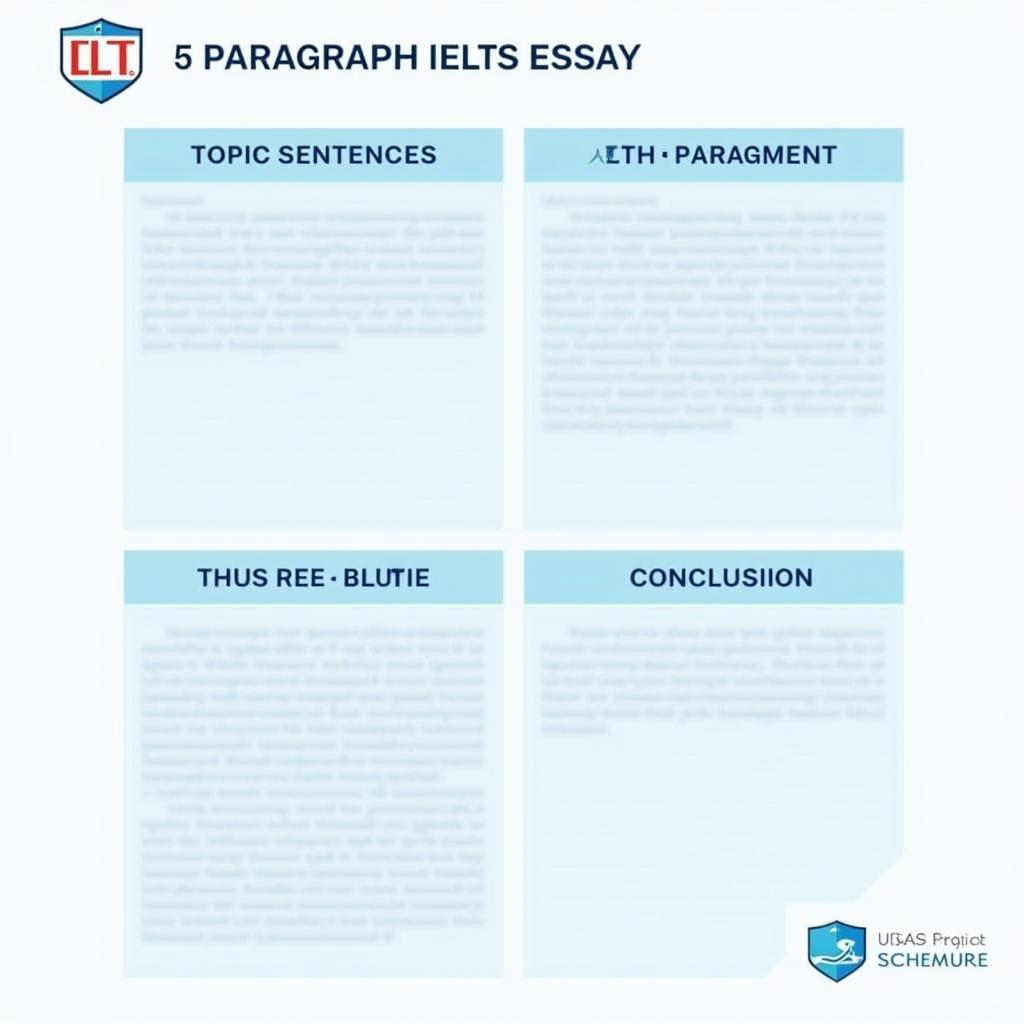Mỗi năm, chủ đề Evolution Vs. Creationism In Science Education (thuyết tiến hóa so với thuyết sáng tạo trong giáo dục khoa học) xuất hiện trong nhiều bài luyện và đề thi tương tự trên các trang uy tín, xoay quanh câu chuyện: nên dạy nội dung gây tranh cãi thế nào trong nhà trường, ranh giới giữa khoa học và niềm tin tôn giáo, và vai trò của chương trình học. Đây là “mỏ đề” quen thuộc thuộc nhóm Education + Ethics/Science, đòi hỏi tư duy phản biện, sử dụng lập luận dựa trên bằng chứng, và ngôn ngữ học thuật chính xác.
Trong bài này, bạn sẽ nhận được:
- 3 bài mẫu hoàn chỉnh (Band 5-6, 6.5-7, 8-9) với phân tích chấm điểm chi tiết theo 4 tiêu chí.
- Chiến lược phân tích đề, cấu trúc dàn ý, từ vựng học thuật trọng tâm và 6 cấu trúc câu dễ ăn điểm.
- Checklist tự đánh giá và mẹo quản lý thời gian cho Writing Task 2.
Một số đề thi thực tế/đã được báo cáo phổ biến, gần gũi với chủ đề:
- “Some people believe that religious studies should be taught at school, while others think it should be a private matter. Discuss both views and give your opinion.”
- “Schools should teach critical thinking rather than facts-only learning. To what extent do you agree or disagree?”
- “The school curriculum should be secular and focus on scientific literacy. Do you agree or disagree?”
 chu-de-evolution-creationism-trong-ielts-writing-task-2
chu-de-evolution-creationism-trong-ielts-writing-task-2
1. Đề Writing Part 2
In science classes, some argue that schools should teach only evolution because it is supported by scientific evidence, while others believe creationism or intelligent design should be presented as alternative views. Discuss both views and give your own opinion.
Dịch đề: Trong các lớp khoa học, một số người cho rằng trường học chỉ nên dạy thuyết tiến hóa vì có bằng chứng khoa học ủng hộ, trong khi người khác tin rằng thuyết sáng tạo hoặc thiết kế thông minh cũng nên được giới thiệu như góc nhìn thay thế. Hãy thảo luận cả hai quan điểm và nêu ý kiến của bạn.
Phân tích đề bài:
- Dạng câu hỏi: Discuss both views and give your opinion (thảo luận hai quan điểm + nêu quan điểm).
- Thuật ngữ quan trọng:
- Evolution: thuyết tiến hóa (evolutionary theory), được hậu thuẫn bởi bằng chứng thực nghiệm.
- Creationism/intelligent design: góc nhìn dựa nhiều vào niềm tin tôn giáo/siêu hình, không phải lý thuyết khoa học theo tiêu chuẩn kiểm chứng-falsification.
- Science classes: phạm vi là môn khoa học, không phải môn tôn giáo hoặc đạo đức.
- Lỗi thường gặp:
- Lạc đề (bàn rộng về tôn giáo nói chung, hoặc đạo đức).
- Ngôn ngữ cực đoan/thiên kiến (mất tính học thuật, thiếu khách quan).
- Thiếu định nghĩa và tiêu chí “khoa học” (empirical evidence, falsifiability).
- Sai mạo từ (a/an/the), giới từ, thì hiện tại đơn/chủ động-bị động.
- Cách tiếp cận chiến lược:
- Mở bài: nêu bối cảnh tranh luận + giới hạn phạm vi là “science education”.
- Thân bài 1: Lập luận ủng hộ “chỉ dạy tiến hóa” dựa trên scientific consensus, curriculum standards.
- Thân bài 2: Lập luận “giới thiệu creationism như góc nhìn thay thế” và phản biện: mục tiêu học khoa học là phương pháp và bằng chứng; gợi ý vị trí phù hợp (ví dụ: Religious Studies).
- Kết luận: Lập trường rõ ràng + giải pháp dung hòa hợp lý (ví dụ: critical thinking, so sánh mô hình khoa học và niềm tin trong môn phù hợp).
2. Bài mẫu Band 8-9
Đặc điểm: Lập luận chặt chẽ, cân bằng, ví dụ cụ thể, sử dụng từ vựng học thuật chính xác, ngữ pháp linh hoạt.
Bài luận (≈300 words):
In contemporary education, few issues are as contentious as whether creationism should sit alongside evolution in science classrooms. Proponents of an “inclusive” approach claim that presenting alternative viewpoints fosters open-mindedness. Yet, in my view, science curricula ought to teach evolution exclusively, while reserving creationism for courses on religion or philosophy, where it can be discussed without compromising scientific standards.
Advocates of pluralism argue that students benefit from exposure to diverse perspectives, especially in culturally heterogeneous societies. They contend that acknowledging creationism can build respect for families’ beliefs and avert polarisation. Moreover, they suggest that debate sharpens critical thinking. While such aims are laudable, they risk conflating scientific inquiry with faith-based claims. Science is defined by empirical evidence, testability, and the capacity for theories to be falsified. Evolution meets these criteria and is supported by a robust scientific consensus across biology, genetics, and paleontology; creationism does not.
Exclusively teaching evolution in science does not entail dismissing religious convictions; rather, it protects the methodological integrity of the subject. If schools blur the line between evidence-based knowledge and doctrinal claims, they inadvertently politicise the curriculum and undermine students’ scientific literacy. A more principled approach is to pair rigorous science instruction with courses that explicitly address belief systems, ethical frameworks, and epistemology. In a comparative religion or civics class, for example, creationism can be examined respectfully as a worldview, while students learn how different domains of knowledge employ distinct standards of justification.
In conclusion, evolution should remain the sole account of life’s diversity in science classes because it is evidence-driven and methodologically coherent with the aims of science education. To cultivate respect and critical reflection, schools can simultaneously offer non-science subjects where creationism is contextually appropriate. This division of labour neither silences belief nor dilutes science; it equips learners with discipline-appropriate tools to understand the world.
Phân tích Band điểm
| Tiêu chí | Band | Nhận xét |
|---|---|---|
| Task Response (Hoàn thành yêu cầu) | 8.5 | Trả lời đầy đủ hai quan điểm và nêu rõ lập trường; có giải pháp dung hòa hợp lý. Ví dụ cụ thể, phân biệt domain-of-knowledge rõ ràng, phát triển ý sâu. |
| Coherence & Cohesion (Mạch lạc & Liên kết) | 8 | Bố cục 4 đoạn chuẩn, câu chủ đề rõ, liên kết logic bằng reference và từ nối ngầm. Không lạm dụng từ nối; progression tự nhiên. |
| Lexical Resource (Từ vựng) | 8.5 | Từ vựng học thuật chính xác: empirical evidence, falsified, scientific consensus, politicise the curriculum. Collocations chuẩn; dùng từ tinh tế, không trùng lặp. |
| Grammatical Range & Accuracy (Ngữ pháp) | 8 | Đa dạng cấu trúc: mệnh đề quan hệ, đảo ngữ nhẹ, danh hóa; chính tả-chấm câu chính xác. Có câu phức dài nhưng vẫn kiểm soát tốt. |
Các yếu tố giúp bài này được chấm điểm cao
- Xác lập tiêu chí “khoa học là gì” (empirical, falsifiable) trước khi lập luận.
- Tránh cực đoan: đề xuất vị trí phù hợp cho creationism thay vì bác bỏ tuyệt đối.
- Từ vựng chuẩn học thuật và collocations chính xác, không màu mè.
- Mở-kết đối xứng, nhắc lại luận điểm cốt lõi bằng paraphrase.
- Lập luận từng bước: từ lợi ích “pluralism” đến rủi ro “politicise the curriculum”.
- Dùng khái niệm “different domains of knowledge” để tạo chiều sâu tư duy.
- Câu phức linh hoạt nhưng rõ ràng, không đánh đố người đọc.
 so-do-cau-truc-bai-ielts-writing-education-co-topic-sentence-va-evidence
so-do-cau-truc-bai-ielts-writing-education-co-topic-sentence-va-evidence
3. Bài mẫu Band 6.5-7
Đặc điểm: Trả lời đúng trọng tâm, lập luận tương đối rõ, có ví dụ; từ vựng học thuật vừa phải; vài lỗi diễn đạt/nhịp câu.
Bài luận (≈265 words):
The debate about what to include in science classes often focuses on evolution and whether creationism should also be mentioned. Some people say that schools should show both sides so students can be respectful and think critically. Others insist that only evolution is appropriate because science depends on evidence. I mostly agree with the second view.
On the one hand, supporters of including creationism believe that young people live in families and communities where religious beliefs are important. If schools ignore these beliefs, they may alienate students and cause unnecessary conflict. Also, advocates claim that when learners compare different ideas, they become more open-minded and improve their reasoning.
On the other hand, science lessons should teach methods and knowledge that come from experiments, observations, and peer review. Evolution fits those requirements and is backed by data from genetics and fossils, while creationism is based on faith. If we mix the two in a science class, we might confuse students about what counts as proof. A better solution is to keep evolution in science, but allow discussions about creationism in religious studies or ethics, where beliefs and values are the main focus.
In conclusion, schools should prioritise evolution in science because it matches the goals of scientific literacy. To promote respect and dialogue, creationism can be addressed in other subjects. This approach keeps each area coherent and still supports critical thinking.
Phân tích Band điểm
| Tiêu chí | Band | Nhận xét |
|---|---|---|
| Task Response (Hoàn thành yêu cầu) | 7 | Trả lời đủ hai phía, có quan điểm rõ; ví dụ hợp lý nhưng chưa thật sâu. Thiếu một ví dụ cụ thể đời thực/học thuật để tăng thuyết phục. |
| Coherence & Cohesion (Mạch lạc & Liên kết) | 7 | Bố cục chuẩn, câu chủ đề rõ; liên kết khá tự nhiên nhưng chuyển đoạn còn “an toàn”. Thiếu một câu tổng kết đoạn mạnh. |
| Lexical Resource (Từ vựng) | 6.5 | Dùng được scientific literacy, peer review; song một số từ còn trung tính, lặp lại (believe, include). Cần đa dạng hóa collocations. |
| Grammatical Range & Accuracy (Ngữ pháp) | 7 | Câu phức có dùng mệnh đề quan hệ/that-clause; nhìn chung chính xác, còn ít câu đơn mạch lạc nhưng đơn giản. |
So sánh với bài Band 8-9
- Độ sâu lập luận: Bài 8-9 định nghĩa rõ tiêu chí khoa học và chỉ ra rủi ro “politicise the curriculum”; bài 6.5-7 chưa khai thác tiêu chí falsifiability và consensus.
- Từ vựng: Bài 8-9 có cụm “discipline-appropriate tools”, “domains of knowledge”; bài 6.5-7 lặp từ “believe/include”.
- Cấu trúc đoạn: Bài 8-9 có câu cầu nối và tổng kết đoạn mạnh; bài 6.5-7 kết đoạn khá nhanh, chưa nhấn luận điểm.
4. Bài mẫu Band 5-6
Đặc điểm: Có quan điểm nhưng lập luận nông, một số ý lạc đề nhẹ; lỗi ngữ pháp-từ vựng và liên kết; diễn đạt thiếu chính xác.
Bài luận (≈255 words) – lỗi được đánh dấu:
People argue whether science classes should teach evolution only or also creationism. In my opinion, schools must teach both because students need to know everything and they can choose what is true. Many students are believing in religion, so if we do not teach creationism it will be unrespectful and even make conflicts with parents.
Firstly, evolution is important, but it is also a theory, so it is maybe not completely true. When teachers explain two sides, students can compare and think, and this is good critical thinking. In the other hand, schools should be neutral and not take one side. If only evolution is taught, it looks like propaganda and students will not trust science.
Secondly, creationism is part of culture for many countries. Science education should connect with culture to be meaningful. We can teach creationism with evidences from Bible and evolution with fossils, then students decide. This way is more democratic and make everyone happy.
In conclusion, teaching both evolution and creationism is the best to avoid arguments and help students learn more things. Schools are for knowledge, so they should provide all informations and not choose.
Phân tích Band điểm
| Tiêu chí | Band | Nhận xét |
|---|---|---|
| Task Response (Hoàn thành yêu cầu) | 5.5 | Có trả lời đề và nêu quan điểm, nhưng lập luận dựa trên suy đoán, chưa phân biệt tiêu chí khoa học và niềm tin; có chỗ lạc chuẩn mực “science class”. |
| Coherence & Cohesion (Mạch lạc & Liên kết) | 5.5 | Liên kết cơ bản, từ nối sai (“In the other hand”); lặp ý “teach both” thiếu phát triển; thiếu ví dụ xác thực. |
| Lexical Resource (Từ vựng) | 5.5 | Từ vựng hạn chế; lỗi từ loại (“unrespectful”); collocations sai (“with evidences”). |
| Grammatical Range & Accuracy (Ngữ pháp) | 5 | Lỗi chia động từ, mạo từ, số ít-số nhiều; cấu trúc câu đơn giản, đôi chỗ chấm câu chưa chuẩn. |
Những lỗi sai của bài – phân tích & giải thích
| Lỗi sai | Loại lỗi | Sửa lại | Giải thích |
|---|---|---|---|
| Many students are believing in religion | Thì/khía cạnh | Many students believe in religion | Stative verb (believe) không dùng dạng tiếp diễn. |
| unrespectful | Từ vựng | disrespectful | Tính từ đúng: disrespectful. |
| In the other hand | Collocation | On the other hand | Cụm chuẩn trong lập luận đối lập. |
| with evidences | Danh từ không đếm được | with evidence | “Evidence” thường không đếm được. |
| all informations | Danh từ không đếm được | all information | “Information” không đếm được. |
| it is maybe not completely true | Vị trí trạng từ/độ chắc chắn | it may not be completely accurate | Diễn đạt học thuật hơn, đặt “may” trước động từ. |
Cách Cải Thiện Từ Band 6 Lên Band 7
- Xác định tiêu chí khoa học (empirical, falsifiable) và dùng chúng để đánh giá ý kiến, không dựa vào “everyone happy”.
- Thêm ví dụ cụ thể: chuẩn chương trình, tài liệu khoa học (genetics, fossil records).
- Đa dạng hóa từ vựng học thuật: scientific literacy, peer-reviewed evidence, curricular integrity.
- Sửa lỗi nền tảng: mạo từ, số ít-số nhiều, collocations cố định (on the other hand, a body of evidence).
- Tổ chức đoạn rõ ràng: câu chủ đề → giải thích → ví dụ → kết đoạn chốt luận.
5. Từ vựng quan trọng cần nhớ
| Từ/Cụm từ | Loại từ | Phiên âm | Nghĩa tiếng Việt | Ví dụ (English) | Collocations |
|---|---|---|---|---|---|
| evolution | n. | /ˌiːvəˈluːʃn/ | thuyết tiến hóa | Evolution is supported by multiple lines of evidence. | theory of evolution; evolutionary biology |
| creationism | n. | /kriˈeɪʃənɪzəm/ | thuyết sáng tạo | Creationism is often discussed in religious studies. | young-earth creationism |
| intelligent design | n. | /ɪnˈtelɪdʒənt dɪˈzaɪn/ | thiết kế thông minh | Intelligent design lacks testable predictions. | intelligent design movement |
| scientific consensus | n. | /ˌsaɪənˈtɪfɪk kənˈsensəs/ | đồng thuận khoa học | There is a scientific consensus on evolution. | broad/wide consensus |
| empirical evidence | n. | /ɪmˈpɪrɪkl ˈevɪdəns/ | bằng chứng thực nghiệm | Policies should be based on empirical evidence. | robust/compelling evidence |
| falsifiable | adj. | /ˈfɔːlsɪfaɪəbl/ | có thể bị bác bỏ (kiểm chứng) | A scientific hypothesis must be falsifiable. | falsifiable hypothesis |
| curriculum | n. | /kəˈrɪkjələm/ | chương trình học | The national curriculum sets clear standards. | national/school curriculum |
| secular education | n. | /ˈsekjʊlə ˌedʒʊˈkeɪʃn/ | giáo dục thế tục | Secular education separates faith from science. | secular curriculum |
| scientific literacy | n. | /ˌsaɪənˈtɪfɪk ˈlɪtərəsi/ | hiểu biết khoa học | Scientific literacy enables informed decisions. | promote scientific literacy |
| critical thinking | n. | /ˈkrɪtɪkl ˈθɪŋkɪŋ/ | tư duy phản biện | Debates can improve critical thinking. | foster/develop critical thinking |
| politicise the curriculum | v. phr. | /pəˈlɪtɪsaɪz ðə kəˈrɪkjələm/ | chính trị hóa CT học | We should not politicise the curriculum. | avoid/minimise politicising |
| faith-based claim | n. | /feɪθ beɪst kleɪm/ | khẳng định dựa trên niềm tin | Faith-based claims are not testable. | evaluate claims |
| peer review | n. | /ˌpɪə rɪˈvjuː/ | phản biện đồng cấp | Peer review improves research quality. | undergo peer review |
| domain of knowledge | n. | /dəʊˈmeɪn əv ˈnɒlɪdʒ/ | miền tri thức | Different domains of knowledge have distinct methods. | distinct domains |
| indoctrination | n. | /ɪnˌdɒktrɪˈneɪʃn/ | truyền bá giáo điều | Schools must avoid indoctrination. | avoid/prevent indoctrination |
Lưu ý phát âm: chú ý âm /θ/ trong “thinking”, /ʃ/ trong “education”, và trọng âm từ ghép như “scientific consensus”.
6. Cấu trúc câu dễ ăn điểm cao
- Câu phức với mệnh đề phụ thuộc
- Công thức: [Mệnh đề chính], because/while/although + [mệnh đề phụ].
- Ví dụ (từ bài Band 8-9): While such aims are laudable, they risk conflating scientific inquiry with faith-based claims.
- Vì sao ghi điểm: Tạo tương phản tinh tế, cho thấy khả năng cân bằng lập luận.
- Ví dụ bổ sung: Although evolution is widely accepted, it is still taught critically. Because science relies on evidence, standards must remain consistent.
- Lỗi thường gặp: Dùng “Although but”; thiếu dấu phẩy sau mệnh đề phụ mở đầu.
- Mệnh đề quan hệ không xác định (non-defining relative clause)
- Công thức: Mệnh đề chính, which/where + mệnh đề phụ (ngăn bằng dấu phẩy).
- Ví dụ: …philosophy, where it can be discussed without compromising scientific standards.
- Lý do ghi điểm: Bổ sung thông tin nền mượt mà, tăng tính học thuật.
- Ví dụ: Evolution, which is supported by genetics, is central to biology. This approach, which respects beliefs, preserves science.
- Lỗi: Quên dấu phẩy, nhầm which/that.
- Cụm phân từ (participial phrase)
- Công thức: V-ing/V-ed + cụm bổ sung, [mệnh đề chính].
- Ví dụ: Advocates of pluralism argue…, conflating scientific inquiry with faith-based claims. (dạng rút gọn trong ngữ cảnh)
- Lý do: Nén thông tin, tạo nhịp văn linh hoạt.
- Ví dụ: Backed by extensive data, evolution remains the standard. Seeking compromise, schools can separate subjects.
- Lỗi: Lệch chủ ngữ (dangling participle).
- Câu chẻ (Cleft sentences)
- Công thức: It is/was + [thành phần nhấn mạnh] + that/who + [mệnh đề].
- Ví dụ: It is evidence-driven knowledge that should define science curricula.
- Lý do: Nhấn mạnh luận điểm then chốt.
- Ví dụ: It is critical thinking that schools aim to develop. It is in religious studies that creationism fits.
- Lỗi: Lạm dụng gây nặng nề; sai thì động từ.
- Câu điều kiện nâng cao (mixed/Type 2-3)
- Công thức: If + past simple, would/could + V; hoặc If + had V3, would + V (hiện tại).
- Ví dụ: If schools blur the line between evidence-based knowledge and doctrinal claims, they inadvertently politicise the curriculum.
- Lý do: Dự báo hệ quả, tăng sức thuyết phục.
- Ví dụ: If creationism were taught in science, students could be confused about proof. If we had separated subjects earlier, debates might be calmer now.
- Lỗi: Sai thì; “would” ở mệnh đề if.
- Đảo ngữ (Inversion) để nhấn mạnh
- Công thức: Not only + trợ động từ + S + V…, but also…
- Ví dụ: Not only does evolution align with scientific methods, but it also integrates evidence from multiple disciplines. (tham khảo phong cách bài 8-9)
- Lý do: Tạo điểm nhấn, nâng band ngữ pháp.
- Ví dụ: Only by keeping subjects distinct can schools stay coherent. Rarely is the curriculum improved by politicisation.
- Lỗi: Sai trợ động từ; thiếu đảo ngữ sau trạng từ phủ định.
7. Checklist Tự Đánh Giá
- Trước khi viết
- Xác định dạng đề (Discuss both + opinion) và phạm vi (science classes).
- Ghi tiêu chí khoa học (evidence, falsifiability) làm khung lập luận.
- Lập dàn ý 4 đoạn, mỗi đoạn 2-3 luận điểm ngắn + ví dụ.
- Trong khi viết
- Câu chủ đề rõ ràng, không lạc đề sang tôn giáo nói chung.
- Dùng collocations học thuật: scientific literacy, empirical evidence.
- Kiểm soát thái độ: khách quan, tôn trọng đa dạng niềm tin.
- Sau khi viết
- Soát lỗi mạo từ (a/an/the), danh từ không đếm được (information, evidence).
- Kiểm tra từ nối (on the other hand, however), tránh lặp.
- Đếm từ: 270–320 là “vùng an toàn” cho bài chắc tay.
- Mẹo quản lý thời gian
- 3’ phân tích đề + dàn ý; 30’ viết; 7’ soát lỗi.
- Viết đoạn thân trước, mở-kết sau để đảm bảo thời gian.
- Nếu bí ví dụ, định nghĩa chuẩn tiêu chí (science vs belief) để giữ mạch luận.
Kết bài
Chủ đề Evolution vs. creationism in science education buộc bạn vừa vững kiến thức nền vừa giữ được giọng điệu học thuật và tôn trọng khác biệt. Qua 3 bài mẫu theo dải band 5–9, bạn đã thấy sự khác biệt ở cách xác lập tiêu chí khoa học, độ sâu lập luận, chọn từ học thuật và kiểm soát cấu trúc câu. Con đường cải thiện rõ ràng: luyện dàn ý dựa trên tiêu chí (evidence/falsifiability), đa dạng hóa collocations, và áp dụng 6 cấu trúc câu ăn điểm. Hãy viết lại đề hôm nay, giới hạn 40 phút, rồi tự chấm theo bảng tiêu chí trong bài. Trong 6–8 tuần luyện đều, bạn có thể cải thiện 0.5–1.0 band nếu tập trung vào TR và GRA trước, sau đó LR.
Bạn có thể tiếp tục với các chủ đề liên quan như giáo dục thế tục, khoa học và đạo đức, hoặc cải thiện “scientific literacy” trong trường học [internal_link: ielts-writing-education-policy]. Hãy đăng bài viết của bạn và học cùng cộng đồng để nhận phản hồi thực tế và tiến bộ nhanh hơn.


